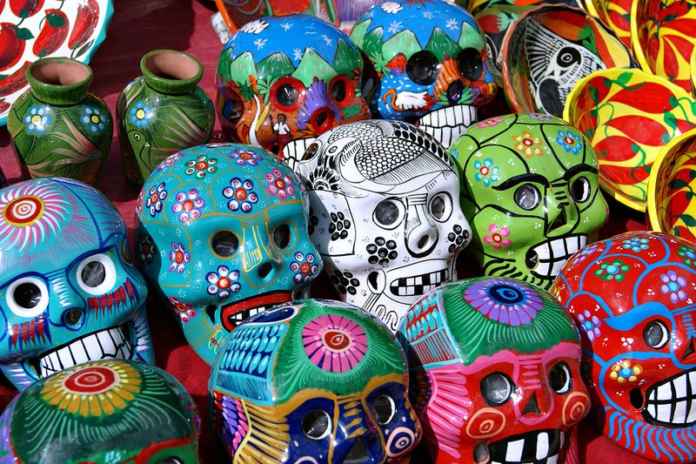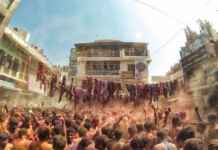If we turn the pages of history all the world over, it would emerge clearly that humans have always been obsessed with the enigmatic force of life, death and what lies after, since time immemorial. Many civilizations and cultures have created rituals to try and comprehend human existence. In the Mexican culture, death was considered the passage to a new life. This is why the deceased were buried with many of their personal objects, which were placed to help them hereafter.
Día de los Muertos is a day to celebrate death — or, more specifically, the deceased — while on Halloween, death is seen as something to be feared. From pre Columbian times, El Día de los Muertos, which literally translates into the Day of the Dead has been celebrated in Latin American countries and is especially popular in Mexico. There are two places in Mexico where Día de los Muertos is specifically special namely, Mixquic and Janitzio.
However, unlike the gory adjectives such as terrifying, scary, associated with death as per popular imaginations, Day of the Dead is a beautiful ritual in which Mexicans happily and lovingly remember their departed relatives.
The origins of the Day of the Dead can be traced to Aztec Indians, who celebrated the event in late July and early August. After the Spaniards conquered Mexico in the 1500′s, they looked down upon it as a pagan ritual and in an effort to eliminate it, they shifted the date of All Saints and All Souls Day to November. Usually, deceased children are honored on November 1, while deceased adults are honored on November 2.
Very early in October, all over the country, bakeries offer the delicious Pan de Muerto, Day of the Dead bread. Another traditional dish prepared for the celebration is the tasty Calabaza en Tacha, Sweet Pumpkin, a dessert prepared with pumpkin, cinnamon, and piloncillo, dark sugar cones. These are also placed at the altar.
Most families put up altars with a picture to honour the deceased members of their family. Significantly, for the first three years that follow the passing away of a person, every November first, it is the godparents of the deceased who decorate the arch. The altars are usually decorated with candles, sugar skulls, marigolds, food, beverages and clothes. There are gifts or “ofrendas,” for the departed, such as pan de muertos baked in shapes of skulls and figures, candles, incense, yellow marigolds, usually a combination of his or her favorite things. Visiting the cemetery is also a highly popular tradition. The tomb or burial plot is decorated. The air is filled with music from Mariachi bands. Fireworks are also common. There is a sense of celebration and gaiety in the air.
The concept of the Day Of The Dead is unique.To catch a glimpse of acceptance of death, plan a trip to Mexico in early November; when Death is a celebration in Mexico.













